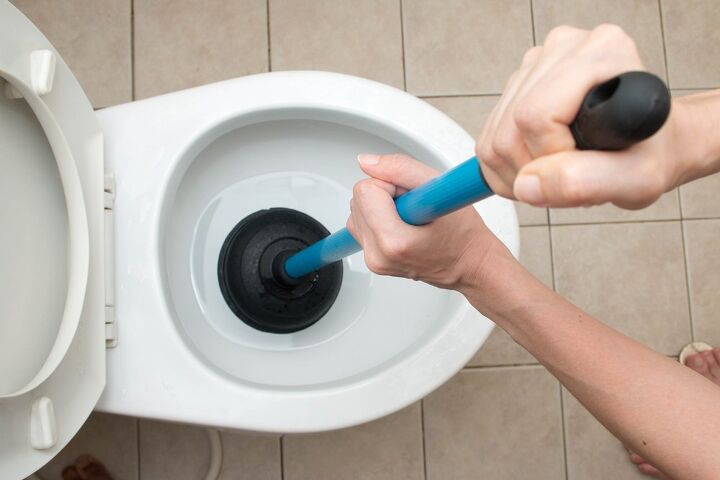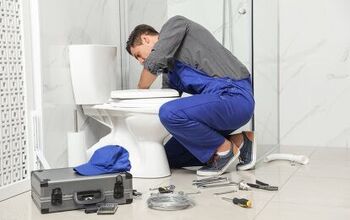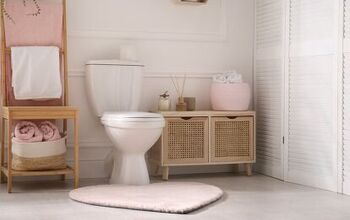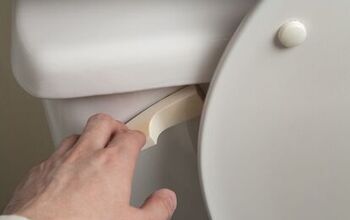Will A Toilet Eventually Unclog Itself? (Find Out Now!)

If you wake up one morning and find that your toilet is clogged—you may go back to bed thinking that the problem will resolve itself in an hour or so. This is possible if what’s causing the clog is a lot of toilet paper, as toilet paper dissolves, albeit slowly, when it’s exposed to water.
But if the clog is caused by something other than toilet paper, it’s quite likely the clog won’t resolve on its own. This article will list the common causes for toilet clogging, as well as provide solutions for when a toilet gets clogged.
A toilet can technically unclog itself, but its ability to do so depends on what’s causing the clog. If the clog is from toilet paper, then eventually the toilet paper will dissolve and the clog will be gone. But if the clog is from something unflushable—or there’s a problem with the toilet and/or pipes—then the clog will have to be removed manually.
Do You Need to Install or Repair a Toilet?
Get free, zero-commitment quotes from pro contractors near you.

How a Toilet Is Supposed to Work
Before toilet clogging is discussed in detail, a brief explanation of how a toilet is supposed to work must be presented first.
- When you flush the toilet, a component known as the rubber flapper lifts up. When this happens, the water that is in the toilet’s tank will rush into the bowl.
- At the same time water is leaving the tank and entering the bowl, the water that was in the bowl when the toilet was activated—as well as whatever waste is in the water—will be sucked down the drain which leads to the sewer line.
- As the water moves from the tank to the bowl, the rubber flapper will slowly sink until it is resting on the flush valve.
- When the rubber flapper is stationary, a component known as the toilet fill valve (or ballcock) will stop filling the bowl with water.
- Once the toilet’s tank has been adequately refilled, it will be ready for the next flush.
What Causes a Toilet to Clog
Clogged toilets are not uncommon. If you use a toilet multiple times in a single day, eventually you’re going to encounter a problem—they’re inevitable. But natural clogs are far less common than clogs that are the result of improper toilet use.
No matter how the clog was caused, the important thing is that you address the clog right away, as failure to do so could damage the toilet in other ways. The causes below are common, though other causes not addressed here may be the reason why your toilet is clogged.
If you don’t know what’s clogging your toilet, then it’s best to get in touch with a professional plumber, as they’ll be able to identify what’s causing the clog quickly.
Attempting to Flush Items That Aren’t Flushable
The toilet is an incredible fixture, one that’s often taken for granted. Before toilets and indoor plumbing, disposing of human waste was far less convenient and definitely not as sanitary. But with toilets, “going to the bathroom” is, for the most part, a simple process—so long as the toilet is working properly.
While the toilet makes getting rid of human waste simple, this doesn’t mean that the toilet can be used as a universal receptacle. In other words, only human waste and toilet paper should be flushed down the toilet.
And just because something is flushable doesn’t mean it should be flushed. Here are some flushable and non-flushable items that find their way into toilets sometimes.
- Wipes
- Diapers
- Feminine hygiene products
- Cotton products
- Cat litter & feces
The main thing to keep in mind is that you can’t flush things that aren’t degradable. Flushing Non-degradable items almost always result in a toilet clog. And if these are the things that are causing the clog, they definitely won’t dislodge on their own.
Other Things to Avoid
You should also avoid flushing hair down the toilet, as it can tangle up in the pipes. Furthermore, if there’s a lot of it down the drain, then removing this clump of hair can be difficult.
And if you have kids at home, you should make sure they’re not flushing anything down the toilet, like toys or other small things kids can get their hands on.
If any of these non-flushable items are causing your toilet to clog—and you can’t dislodge the item(s) on your own—then it’s best to get in touch with a professional plumber. They’ll be able to dislodge whatever is causing the clog, and they’ll do this in a manner that does not damage your toilet.
How to Prevent a Clog From Causing Overflow
When the toilet is clogged—and you’re unaware of this—then there’s a chance that the clog could result in an overflow. An overflow isn’t likely on the first flush, but the likelihood of this happening goes up significantly past the second flush. You shouldn’t flush as a means of dislodging the clog, especially if you don’t know what’s causing the clog.
Generally speaking, when a clog is identified, the first thing you should do is grab the nearby plunger. Plunging is a time-tested clog-removal method, and one can plunge without help from a professional plumber. If plunging resolves the clog, you won’t have to worry about an overflow.
More Overflow Prevention Tips
But when an overflowing toilet is of particular concern, you should place your hand on the shutoff valve before you flush. Using the shutoff is a lot simpler than trying to disable the flapper and float manually. Furthermore, this latter method takes a long time to execute, so preventing an overflow this way is unlikely.
And before a clog ever occurs, you should ensure that the shutoff valve is working properly. When the valve is not used often, turning it in the instance when it’s needed can be challenging.
If you can’t access the shutoff valve because it has been rendered inoperable, you’ll have to take off the tank cover, reach inside, and disable the flapper and float manually. These two components play major roles in the bowl and tank refilling processes, which means disabling them will prevent both the bowl and tank from filling with water.
How to Unclog a Toilet
If you don’t want to wait for the toilet to unclog on its own, follow the steps below to address the problem.
First, you should turn off the shutoff valve, as doing so will ensure there’s no overflow.
The next thing you should do is grab a plunger and then position it so the open end is right up against the drain hole in the bowl. Once the plunger is in the proper position, push down and then pull up quickly. You should feel a suction when you do this.
If you don’t feel the suction, then position the plunger so it has a tight seal and then resume plunging. When you feel a lot of resistance, this is because you are forcing the water within to dislodge the clog. When the resistance lightens, this means the clog is dislodging.
To ensure there’s an effective plunging seal, you should seal off the shower and sink drains. All the bathroom fixtures are connected, so if these drains aren’t covered, then the pressure from your plunging will have places to escape, making the plunging less effective.
Unclogging a Toilet Without Using a Plunger
The plunger isn’t the only thing you can use to dislodge a clog. Using a plunger, however, is simple and straightforward. But you could also use liquid soap, hot water, a wire hanger, a toilet brush, or a snake to remove a clog.
You should only use these other items if the clog is totally or partially visible, as most of them can’t get deep down the drain. As far as the snake is concerned, most homeowners don’t know how to operate one of these effectively, which explains why professional plumbers are often called in when snaking is required.
Do You Need to Install or Repair a Toilet?
Get free, zero-commitment quotes from pro contractors near you.

Related Questions
Will boiling water remove a clog?
If you want to use water to dislodge a clog, you should make sure that the water is hot but not boiling. Pouring boiling water down the toilet can damage the toilet bowl as well as the pipes.The toilet bowl and the water in it are significantly cooler than boiling water. Therefore, when the boiling water meets the bowl and its water, contraction can happen immediately, causing cracks in the bowl, pipes, or both. Avoid using boiling water so you don’t turn a simple clog into a much bigger plumbing problem.
Will leaving a clog lead to bacteria growth?
If the clog is from waste that didn’t go down the drain pipe the right way—and you let this sit for hours—then bacteria can migrate from the drain and spread within the bowl, often in places that you won’t see. Unchecked bacteria are a health hazard, especially if the toilet overflows and these bacteria are able to exit the bowl and spread.

Matt loves everything DIY. He has been learning and practicing different trades since he was a kid, and he's often the first one called when a friend or family member needs a helping hand at home. Matt loves to work with wood and stone, and landscaping is by far his most favorite pastime.
More by Matthew Mountain




















![How To Reset A Whirlpool Cabrio Washer [In 5 Easy Steps!]](https://cdn-fastly.upgradedhome.com/media/2023/07/31/9076531/how-to-reset-a-whirlpool-cabrio-washer-in-5-easy-steps.jpg?size=350x220)






